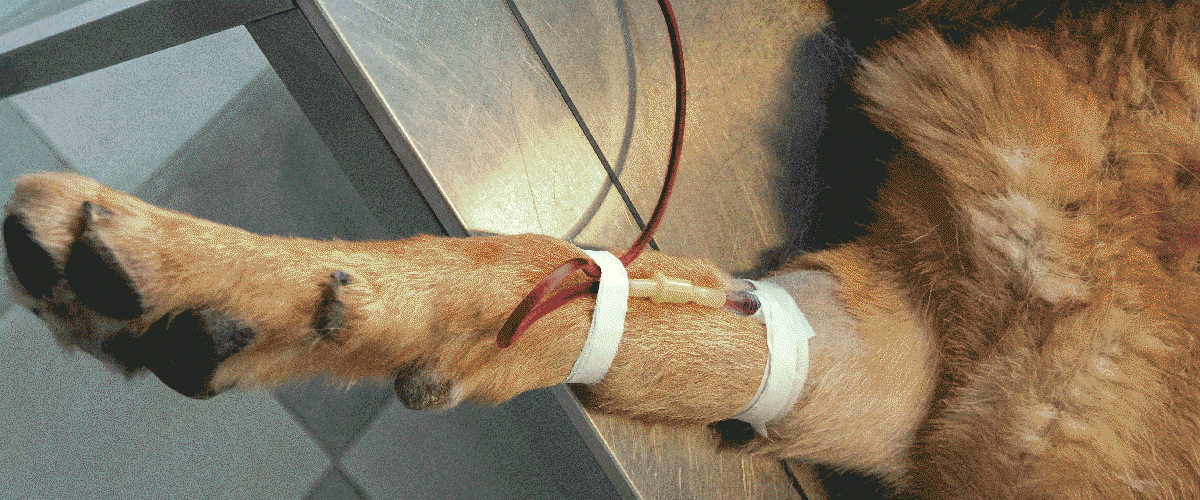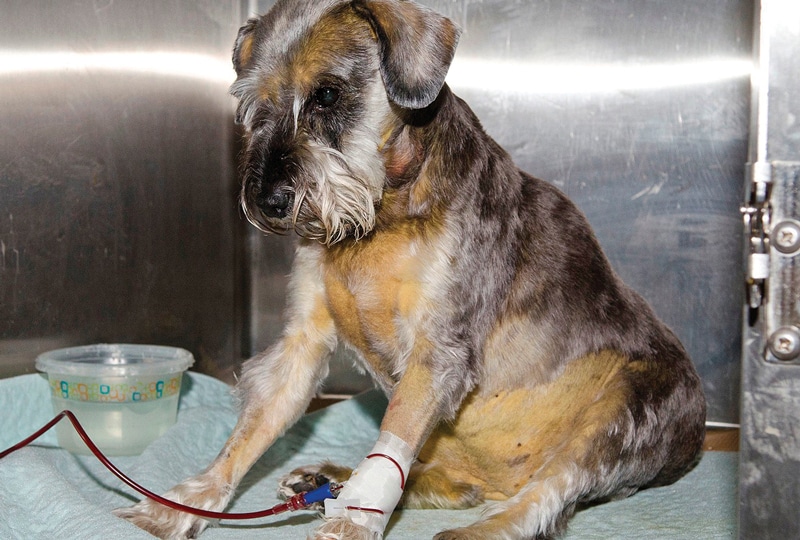Transfusion Therapy
Blood transfusion has been practiced for centuries for saving lives of critically ill human beings and animals. The first canine blood transfusion was performed in the mid 17th century. Since then, and with the help of the latest techniques and equipment, blood transfusions have become common practice.
Red Blood cell transfusions are necessary for dogs and cats that are experiencing a symptomatic deficiency in oxygen carrying capacity associated with anemia (lack of red blood cells). This is due to three main categories:
- hemolysis (red blood cell destruction) e.g. Immune-mediated conditions, Onion toxicity.
- hemorrhage (blood loss) e.g. Trauma, bleeding disorders or,
- inadequate erythropoiesis (red blood cell production) e.g. FIP, Kidney disease, and certain cancers.

Which pets require RBC transfusion?
Clinical signs that may indicate the need for RBC transfusion include:
- Increased heart rate
- Increased respiratory rate
- Prolonged capillary refill time
- Low blood pressure
- Pale gums
- Acute blood loss >30% body weight
- PCV (blood level) <20% with other clinical signs consistent with hypoxia (low oxygenation).
- Hypoproteinemia (low protein levels)

What blood products are available and what are they used for?
The four main blood products include Whole blood, Packed Red Blood cells, Fresh Frozen Plasma and Frozen Plasma.
Whole blood:
- Improves oxygen delivery
- Provides clotting factors
- Supports blood pressure – important for protein-losing disease (e.g. GI/Kidney loss), skin wounds/burns.
Packed Red Blood cells
- Red blood cells that are separated from plasma.
- Similar indications as Whole blood.
- Utilized when a patient may have heart or kidney disease.
Fresh Frozen Plasma (FFP)
- Plasma that is separated from whole blood in less than 6 hours after collection.
- Plasma is the clear anticoagulated (non-clotted) portion of whole blood.
- Used for blood pressure support and for patients with bleeding disorders.
- Provides clotting factors (same as fresh whole blood).
- FPP contains all components of the coagulation cascade, albumin, immunoglobulins, lipids, and electrolytes.
Frozen Plasma (FP)
- Plasma that is separated from whole blood in less than 5 days after collection.
- Used similarly to FFP i.e. blood pressure support and for patients with bleeding disorders.
- FP contains all non-labile coagulation factors (II, VII, IX and X preserved), albumin, immunoglobulins ,lipids and electrolytes.

Is transfusion safe for my pet?
Blood transfusions are generally considered safe however there are potential reactions. Transfusion reactions can vary from mild (e.g. fever, itchy skin, swelling of the face) to life-threatening (e.g. hemolysis, shock, renal failure). It is important to cross-match cats and dogs with a second transfusion to minimize risk. Most reactions can be avoided with proper typing, crossmatching, and monitoring.



